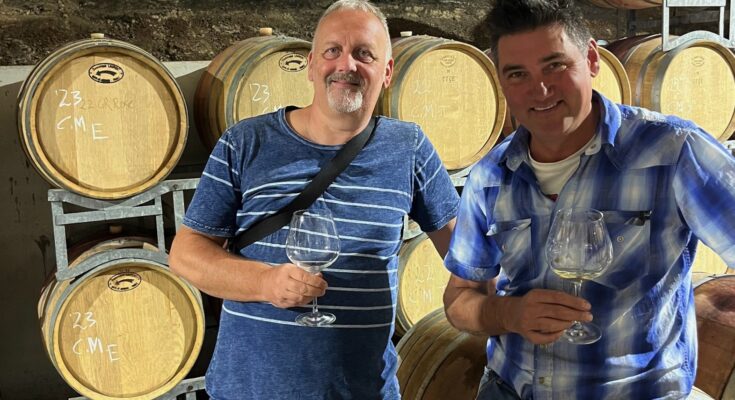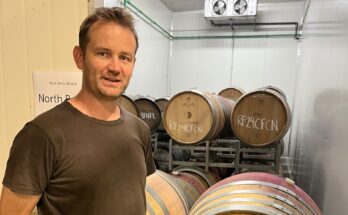Based in the Macedon Ranges, vigneron Michael Dhillon was named Winemaker of the Year in the 2022 Halliday Wine Companion. As well as this tremendous honour, he also registered a nomination for Viticulturist of the Year, and featured as one of the Runners-up in Winery of the Year. Not stopping there – the Bindi Block 5 Pinot Noir 2019 was named Pinot Noir of the Year, and a runner-up for Red Wine of the year. As someone who rates the Halliday book as the best piece of critical writing about wine that is published anywhere – this is indeed some collection of awards!
Michael is still deep into harvest when I arrive at the winery in Macedon, Victoria. I’d expected that all the grapes would be in by now, but Victoria has again suffered through a turbulent year of odd weather patterns – clear evidence of Climate Change, and worrying times for viticulture.
Michael Dhillon: We had 35mm of rain on Saturday night. The problem was there was ripeness like this and sugar, and then we get more rain and it drops. Then it gets fragile – more ripeness and sugar, and more rain… and when it is doing that, it is susceptible to botrytis. It’s not just the dilution, it’s the weather on the berry and it affects the integrity of the skins. Even if it doesn’t split, it is the constant sun, wet dry, wet.. and the botrytis comes in. It is challenging.
We’re doing some pumpovers at the moment. We’re putting some stuff into barrel now to ferment – some Grenache. I’ve got a friend with a vineyard about 80kms north of here in Heathcote on the old stony red soils, and we’re just settling out some juice from grapes that was picked on Saturday morning, and then it is in barrel for a wild yeast ferment.
WineFolio: Is that the ‘Accidental red’ that you make?
MD: (laughs) No, it’s a different thing. We’re going to deliberately make ‘Accidental red’ this year! We’ve got access to a vineyard that was planted in the late ‘90s in the northern end of the Macedon ranges, and we got some Riesling and Chardonnay from there. And they’ve got some Merlot, Shiraz and Cabernet, so we thought we’d make a rosé from some of that fruit, as well as the Dry Riesling and Chardonnay. And we were pressing out the Merlot and thought ‘well we’ve got enough out of these berries so we’ll stop there’. But there was quite a lot of juice left, and some berries intact, which seemed a bit of a waste.
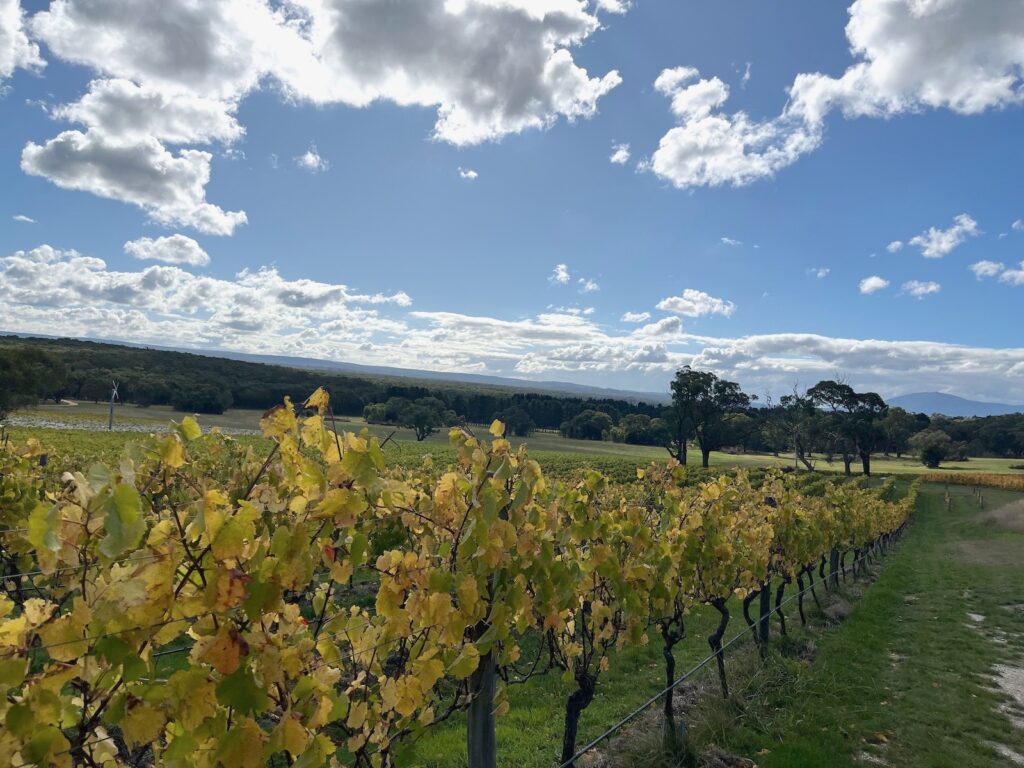
So we shoved it into a fermenter, and we were pressing the Shiraz – which has more colour that comes easier than Merlot. We’ve quite a lot of juice still in the Shiraz, but there’s too much colour for the rosé, so we stopped. So that’s the rosé component done… but let’s keep pressing the juice out and throw it on top of those Merlots skins and berries that had juice intact. So we did and we fermented it for a while, and about two-thirds of the way through I’m like “hmm that’s quite silky tannin” considering it’s not much skin to juice ratio. Decided to press it out and finished the fermentation in old barrels. Ended up with this silky smooth tannin, but quite light and gentle wine. Put it through malolactic and bottled it up.
I think we’ll do it this year by doing all the Merlot juice with the skins and throw it in tank. No stems, just juice and skins and then we’ll press the Shiraz away from the skins – so there’ll be no Shiraz skins in there, just Shiraz juice. And then we’ll ferment that out. It’s reducing the tannin load. So Merlot skins have half the juice to skin ratio, and don’t be too long on skins. It should be something you could chuck in the fridge – cheap and cheerful.
I’ll take you for a walk, whilst it is sunny! For the last twenty years we’ve been late March to early April. From ’91 to ’99 we averaged about the 20th April. In 2002, 1996 and 1994 we finished in May – so we have had later! We started in mid-Feb with a lot of activity – nets and bottling. There was snow in the high country at the end of last year, but we’re only at 500m above sea level here, so not vastly high. But there are vineyards on the slope of Mt Macedon and the northwest where it is up to 750m above sea level, so they are 50% higher than we are. That equates to about a week, so it keeps pushing you further out. They might not get fruit ripe for table wines at all this year. So they’ll be making decisions right now to pick and sell off for sparkling base.
You can see here the quartz rock in the soil. This is Block 5 Pinot. We’ve actually got about an acre and a half of Pinot Noir still on the vine down there. It’s a colder spot on more fertile soils, and a higher crop because of that, so we’re waiting for that to ripen sufficiently. Block 8 doesn’t like this terrible weather. Because the vines are so close, what works in very dry years in creating humidity and soil moisture – in damp years it embeds that, so you get more disease pressure. At flowering you get downy mildew, and you get pressure at ripening from botrytis. It’s been such a challenging season – you can see how humid the environment is compared to the wide open rows.
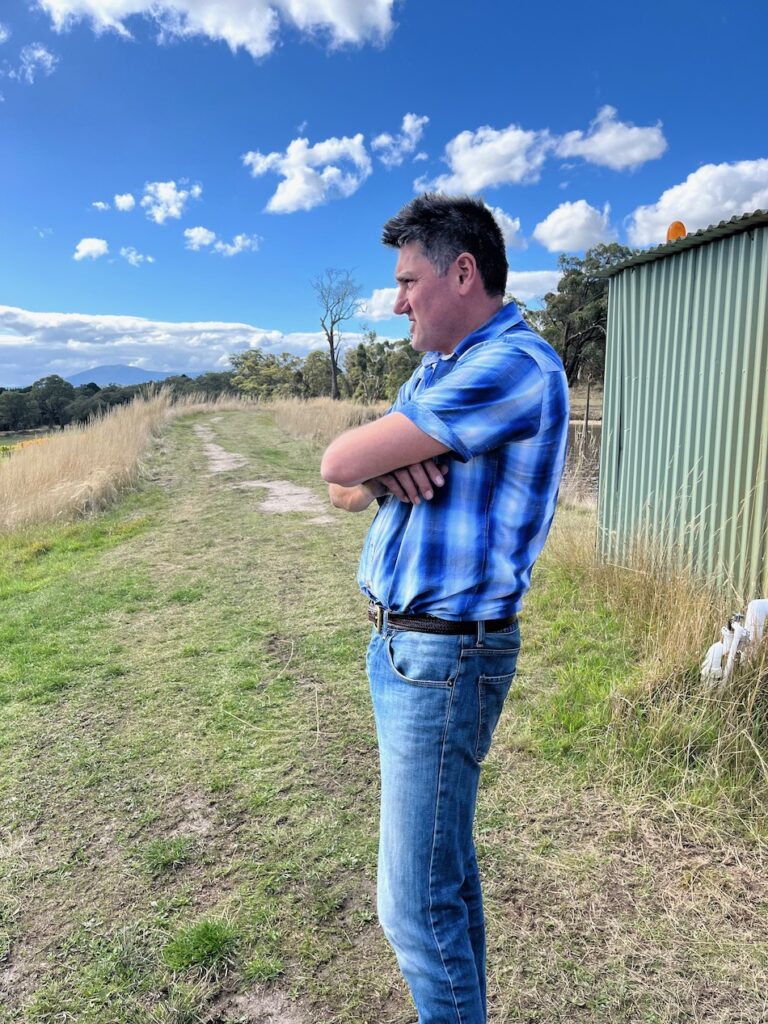
Plus, there’s a tiny crop per plant. This year was 250g per vine! It’s a very intensive way of farming. This is 11,300 vines to the hectare, and there’s a little section over here that’s 22,500 vines per hectare, and there’s a corner in Darshan like that as well. Just to see what happens. They moderate their vigour within their environment. Vintage can always override the land, but the best vineyards push through the bad years, and the best winemakers do too.
When we had the land, we were just sheep farmers – we didn’t know anything. We planted in ’88, then again in ’92 with Block 5, up there in 2001 and Darshan in 2014, then Block 8 in 2016.
We’ve got some open areas over towards the north which we’ll plant with Chardonnay and Pinot Noir. The sheep went in 1997. The time and effort in looking after them – it virtually cost us money.
WF: Can it be frustrating though – being a winemaker?
MD: More challenging than frustrating at times. You have these dream seasons where everything ripens beautifully and there’s been no stress, and you know the market is going to love the wine. The last time that happened was 2019 and the last four have been the most challenging run of vintages.
WF: Isn’t that challenge more rewarding though?
MD: No! You get to winter time and you think “Oh, God”. We’ve banked enough wine, that’s good enough, that people enjoy, and will turn over enough revenue that will get us through to the next time, and so forth…
It is satisfying to get through tough years and know that you’ll be OK, and there’s a pride in that. But it’s not joyous. It’s risky and vulnerable. The more success you have, the more there is at stake. Like when you start off you’re quite naïve and you go “Well, hope it works out” and you don’t set an expectation. But now the market looks at you with an expectation. They’re going to line you up next to them, and them, and them…and it’s not as good as it was, or they didn’t do as well…
WF: And you only get so many shots at it as well?
MD: You get one chance a year, and you’d like it to be really good. And I know it’s not always possible, so that’s OK. As your reputation grows and your price grows, there’s a reasonable expectation out there that your wine should be a certain quality, and style. It’s frustrating when you can’t achieve that purely because the weather hasn’t allowed you to do that. We’ve spent more money on our vineyard this year than we did in 2019. More long hours – to get something that’s not as good quality.
WF: Is it true that sometimes those wines from the really tough years can really shine later down the track. You might not be enamoured with them on release, but a few years along, and the scars of the season have healed – those wines can look pretty good.
MD: We had one yesterday – we went out for lunch – and had an ’02, which is shit year. As bad as this one – probably worse! And the wine was delicious. It was OK after five or ten years – never great. There were four barrels. Normally we’d have at least twelve barrels. Brutal.
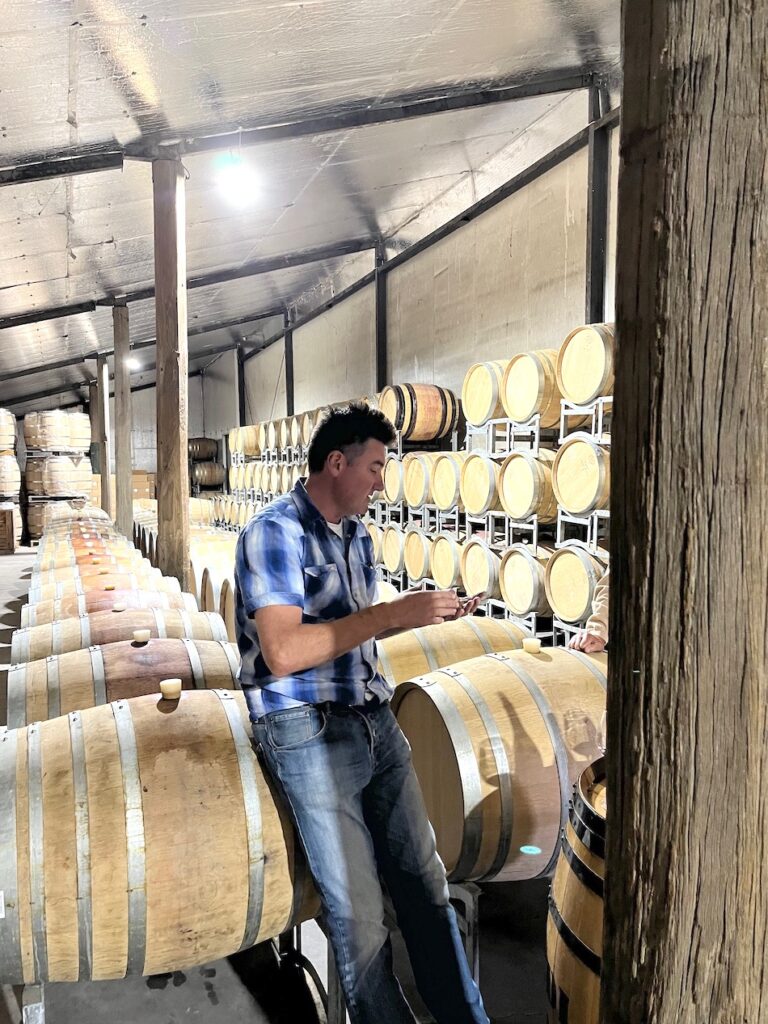
For me it’s not very complex. We farm the vineyard as best we can. We’re inspired by great wines – and go “What do great wines taste like?” But we don’t then go and really change anything in our winemaking. You farm the land. Bring it in. Do what you do. Leave it barrel a bit longer; leave it on less a bit longer; put it through malo – those things happen in terms of getting things to where you want them to be. That’s about it.
WF: I was impressed with the Halliday Award this year – to be acknowledged in both the winemaking and viticulture sides – as well as the finished wines – is a great reward.
MD: That was kind, yeah. It’s been thirty five years since I helped Dad plant the vineyard. If you’re in for long enough and you don’t mess it up! Keep going steady, and maybe get a bit higher every now and then. Just don’t go down, that’s all.
It’s taken me a while to learn not to agonise too much. There are times when we absolutely have to do stuff. You can’t be lazy and take your eye off the ball. You’ve got to look at things all the time. For us, 95% we’re looking at things and going “Don’t do anything”… but then it is time to rack or stir, or get out the sulphur. There’s a few things along the way – but it’s more about when you do those things. Most of the time we’re choosing not to do them. The wines are benefiting from not being “done”. But you’ve got to handle things at the right time – when they need it.
Children. Similar thing. We’ve got kids who are 18 and 20 now, but in those early days every single moment they have to be attended to. But then as they get older it’s like – let them keep doing their things, because that’s how they’ll learn now – and if every now and then something has to be said, or done… otherwise the best thing is for things to occur without you interfering.
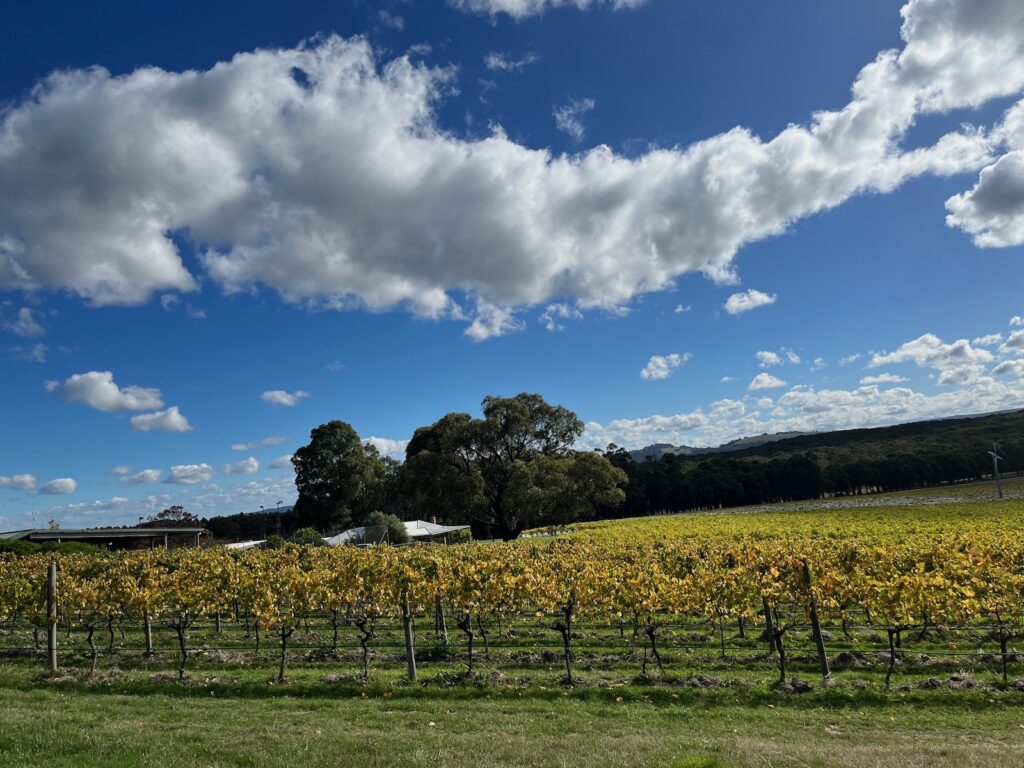
WF: Looking back at the decision to move the family farm over to growing grapes – what was the motivation?
MD: Dad had a passion for wine. And a guy who became his friend and mentor – Kostas Rind – he was right into wine, with a wine club and fermenting his own grapes into wine. Dad’s family were farmers in India, and Mum’s family were farming here. So the land was part of our family history. You marry in the land, the farming and the love of wine. And it was an era where there was an encouragement in this area to diversify. We went to a couple of seminars, but there was no making wine within 25kms of us. Pat at Craiglee was probably the closest. Back in the 1970s it was the Macedon/Sunbury wine region, and then Macedon got a few more vineyards going, and people were saying things like “well, we’re up in altitude here”. Everyone knew Pat, but it was different back then. The encouragement was there for grape growing, not just to supply wineries, but to do your own label.
Dad got a consultant out here in 1976, and they said “No, it’s not a good spot. You’d waste your time and money – it wouldn’t work”. And he had a friend with a farm about 10kms down the road, with a terrible frosty, boggy paddock. And the guy said “Oh this is a good spot, you should plant there!” So they planted Cabernet and Shiraz and Riesling in there. Didn’t work (laughs). We have two Chardonnay vines on our verandah from that period in the mid 70s.
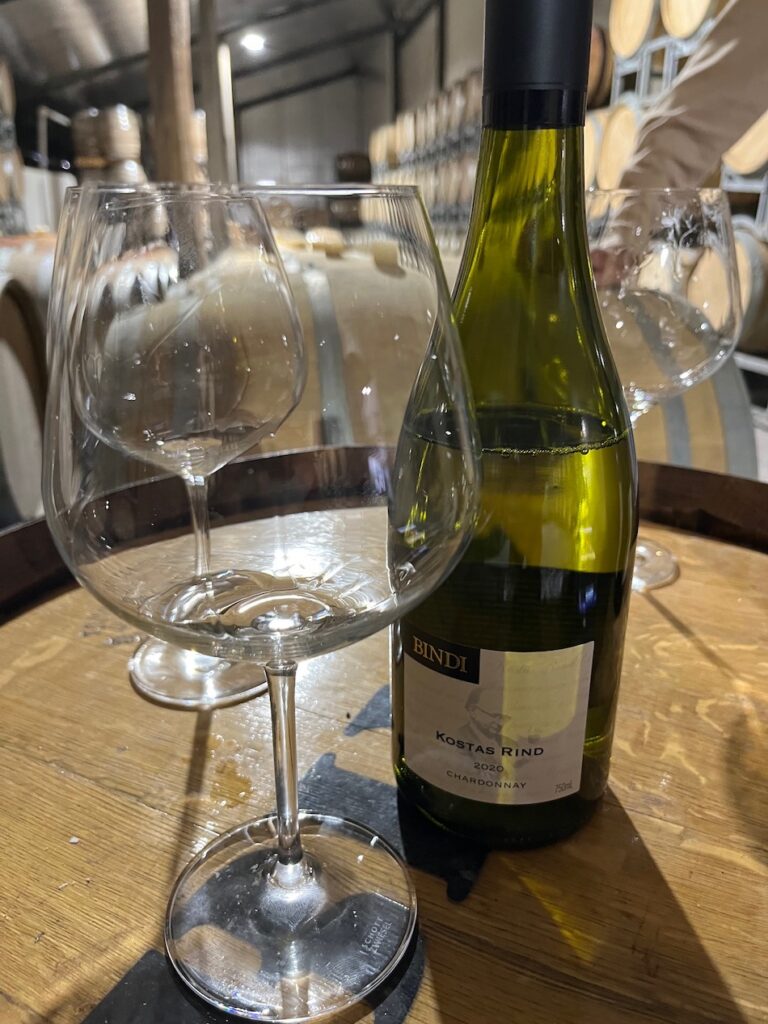
Michael pours us a Chardonnay to try… a Kostas Rind 2020.
MD: 2020 was a cool year – the COVID year. Picked under social distancing – in April. It was a pain in the arse, because you’ve got people, here, there; family groups; caterers bringing lunch so everyone’s got their own little food packs. No sharing of any cutlery or food. We normally get big tables in here with 30 or 40 people. Everyone outside on their own tables. We got through it and were privileged to be able to actually have people come and work, and do things safely. We weren’t stuck in some unit in the City.
WF: That’s got an amazing energy to do – dancing over your palate, like jazz hands in your mouth. About a third new oak?
MD: Yes. We prefer Sirugue. Funny, because this is our 30th vintage using Sirugue. In ’91 we had three barrels of Chardonnay which we used for the Pinot the year after, and in ’93 we got some Boutes barrels which were good. But I said to Stu if you could use any barrel what would you use – for Pinot – and he goes “I’d use Sirugue – Rik from Giaconda imports them and uses them on his wines” So in 1994 we started using them, and this is our 30th vintage of using them. It’s elegant and gently spicy. The vines are 35 years old now – in this wine.
This wine is interesting because it has a slight skin-contact period, because the time it takes to fill the press load can be four hours. We throw it through the destemmer, break the berry, go into the press, and we turn the press a few times while we’re waiting for the next load to come from the vineyard. Then we line up all the barrels and we fill barrel by barrel. And so the first barrel is quite green juice, and as you press towards the end it is browner. We’ll get eight or nine barrels. The first couple are really searingly tight and clean, and the last barrel is heavy, high pH, high solids, goes through malolactic very easily.
But I like them all together, and they go together in the tank. Nothing gets taken out and the only thing that this wine has added to it is some sulphur dioxide. I never do any batonnage. They just sit on the less and the lees start to break down and give some texture. The last barrels ferment fast and warm; the first ones slow and cool. The first barrels are very unlikely to go through malolactic.
Now – this is Grenache. Warm climate Pinot! The site is very rocky – unbelievable how much rock! It’s cambrian so there are green stones and red rock. It’s a very interesting spot and it is amazing when the fruit comes in – with its brightness, and low pH. Ferments easily and stays clean, and we put it into old barrels, and it works. We pick it early enough to keep the raspberry freshness.
WF: We just don’t have enough Grenache in New Zealand. I do love it when I get given a good one from Australia – and am a bit envious.
MD: How is New Zealand wine going, in general?
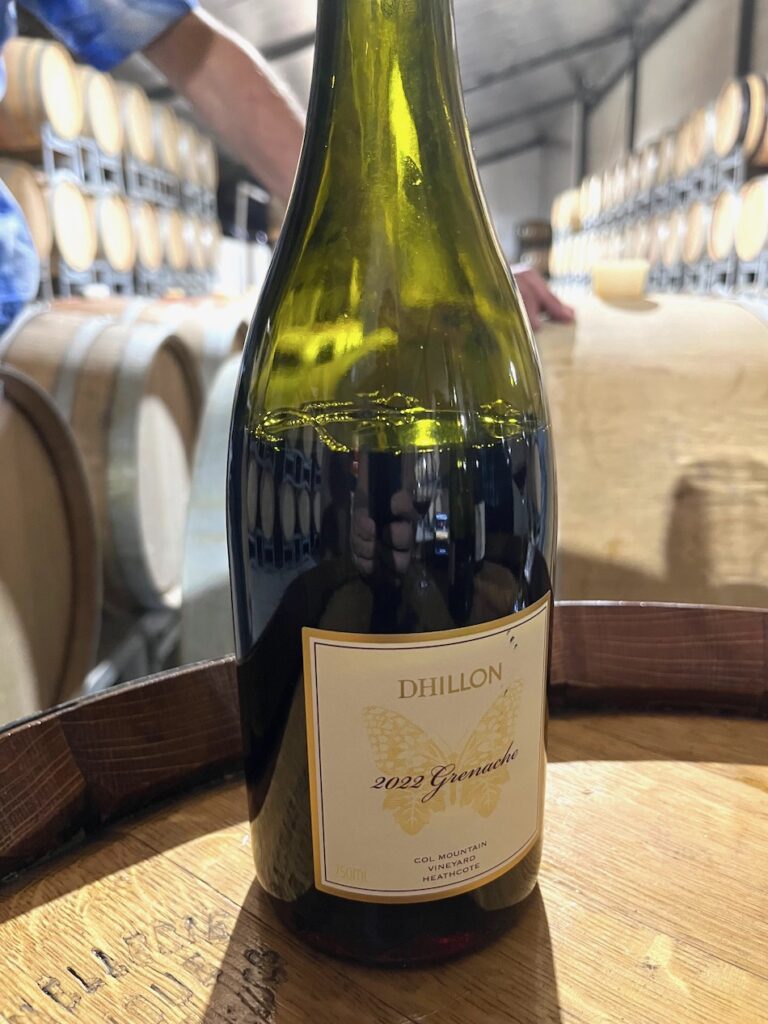
WF: Obviously we had a massive weather event come through – in fact, more than one – and some parts of the country got hit quite hard – including some parts of Hawke’s Bay and Gisborne. Generally in the North Island we’ve had no summer. I can remember having wet summers, or cool summers – but not one where there just isn’t a summer!? But South island was as good as it always it – a real tale of two islands. The South has had a beauty.
How many cases do you produce here? And how many barrels in here?
MD: About 4000 cases, and 250 barrels. Someone asked me the other day so I went through and counted them. Bear in mind we get about 1.5kgs per vine, normally. The narrow planting is about 300grams! It works out to be between one and two tonnes per acre anywhere. Sometimes we use 4000 vines to get one or two tonnes, in other places 1000 vines. For the close-planted, we have to buy pretty dedicated equipment and then you do four or five times the amount of work pruning, shoot thinning. You save a bit of walking distance because they’re all close together, but that’s not a big time expenditure.
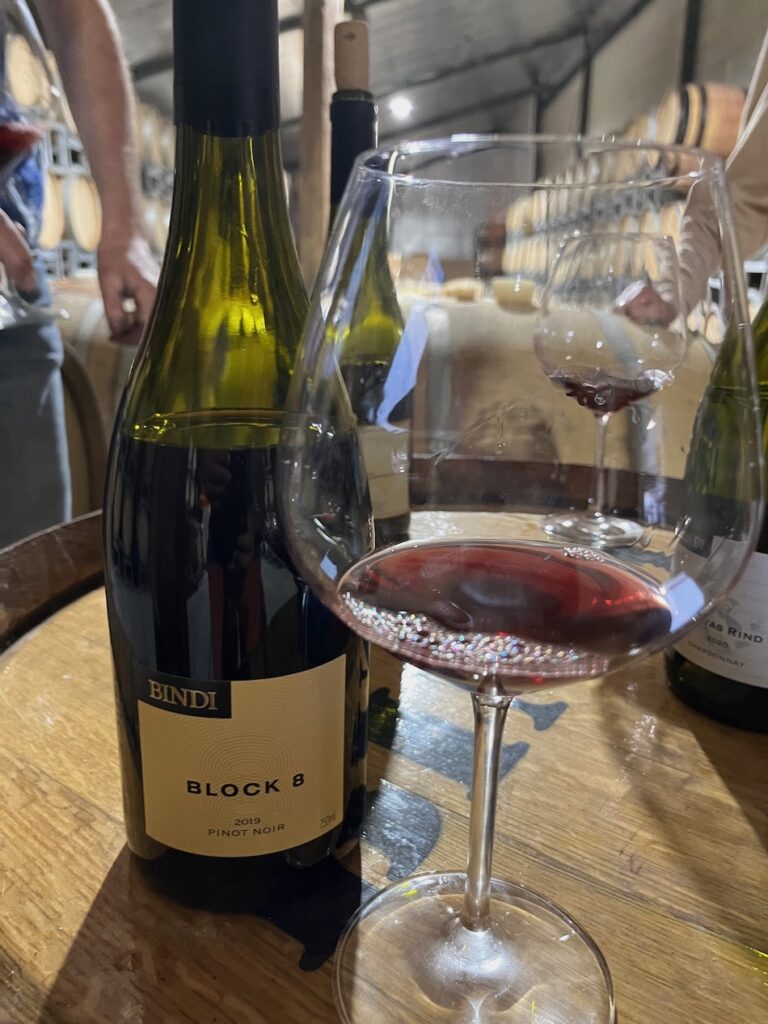
This is 2019 Block 8 Pinot! High density…the block we walked over to. This has 50% new oak in it, which is high for us. There’s a volume of tannin present, but it is quite fine, sweet and succulent. A lot of earthiness in there, and a root vegetable character as well.
WF: OK, wow this has some power to it. I’m a lover of tannin, and this is gorgeous. Can I get a bottle of this?
MD: We haven’t sold any yet. It will go out to our Mailing List – it’s not for sale.

